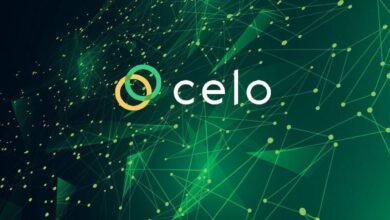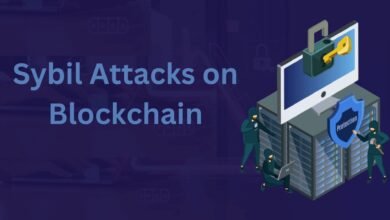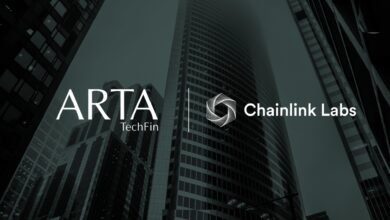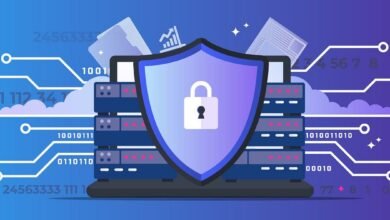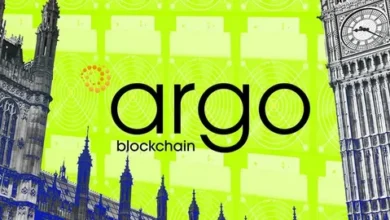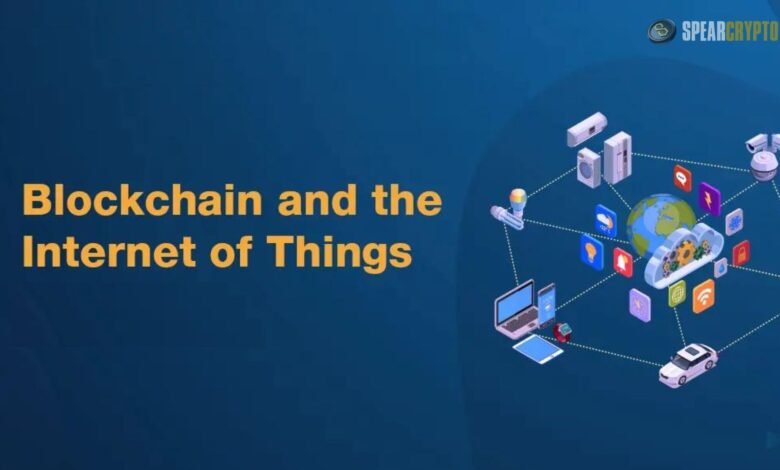
The fast development of technology has made two revolutionary ideas possible: Blockchain and the Internet of Things (IoT). While each technology can transform whole markets independently, combining the two will undoubtedly usher in a paradigm shift in how we use the digital and physical realms. This essay dives into the newest innovations in Blockchain and IoT, discussing their possible uses, synergies, and the obstacles they confront in revealing new opportunities for a decentralized and linked future.
Blockchain Technology
Blockchain is a distributed ledger technology that ensures data transparency, security, and immutability. It operates on a decentralized network where transactions are recorded in blocks and linked in a chain. Each block contains a cryptographic hash of the previous block, a timestamp, and transaction data. This decentralized and tamper-proof nature of Blockchain makes it an ideal solution for applications requiring trust, traceability, and accountability.
The Internet of Things (IoT)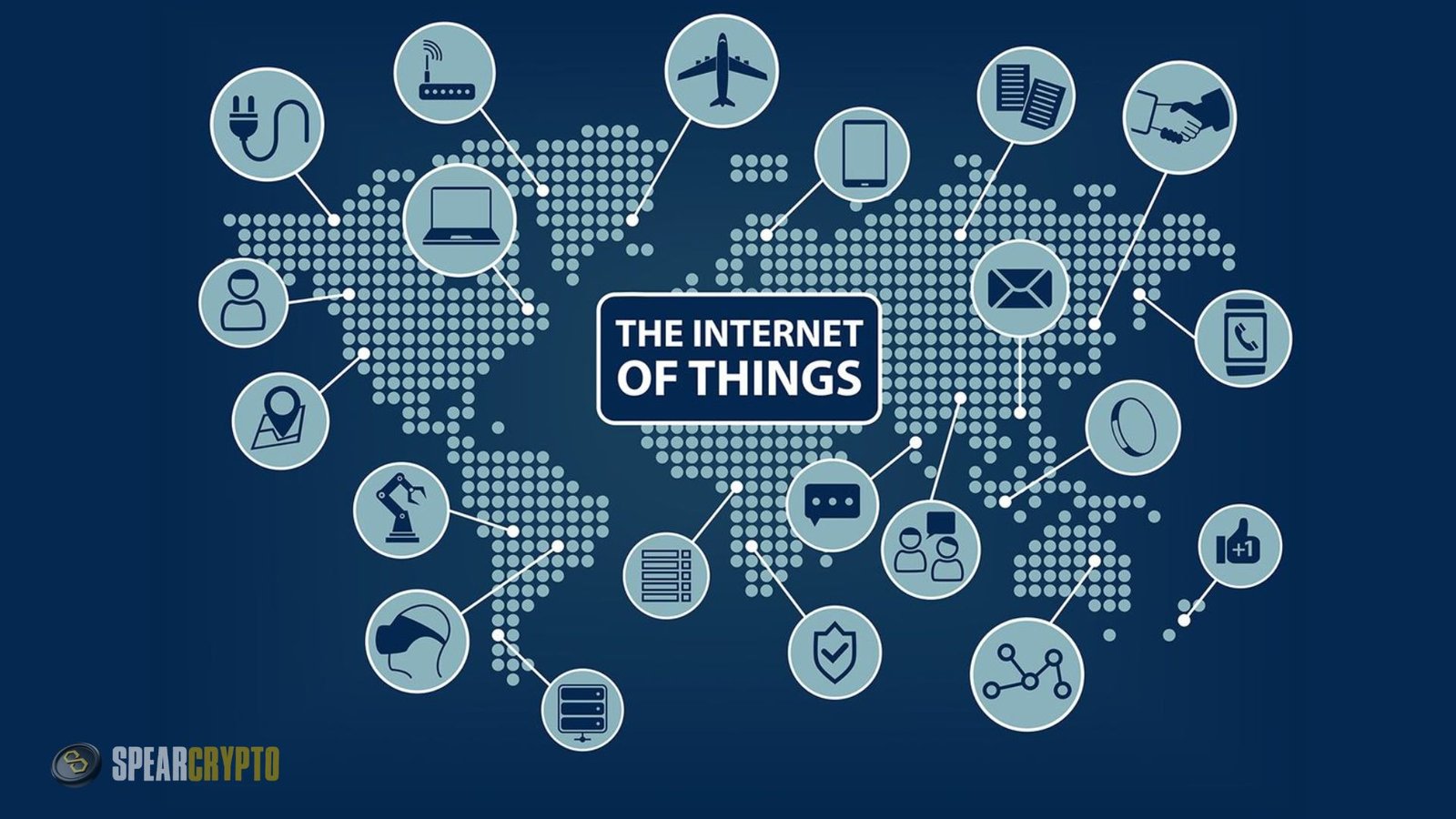
A network of interconnected devices that can share data and communicate with each other through the Internet is called the Internet of Things (IoT). These gadgets allow for automation, decision-making, and real-time monitoring since they gather and transmit data, often enhanced with sensors and actuators. The Internet of Things (IoT) is already making a difference in many fields, enhancing efficiency and quality of life in smart cities, healthcare, agriculture, and manufacturing.
The Intersection of Blockchain and Internet of Things
Integrating Blockchain with the Internet of Things (IoT) is an obvious next step because the two technologies work hand in hand to solve the problems of privacy, interoperability, and data security in our increasingly linked world. Blockchain technology’s distributed and irreversible nature can potentially strengthen the trustworthiness and safety of IoT networks. At the same time, the Internet of Things (IoT) can supply the information and connections needed to run Blockchain-based apps.
Enhanced Security and Data Integrity
Information safety in transit is a major issue with the Internet of Things. Because of their lack of powerful security features and low processing power, IoT devices are frequently the targets of hackers. Blockchain technology, which records all transactions involving the Internet of Things (IoT) in a decentralized and immutable ledger, can solve this problem. Therefore, the security and integrity of IoT systems are enhanced, and data cannot be edited or removed without network consensus.
Decentralized Identity and Access Management
Secure identity and access management are typically necessary for IoT networks to avoid data breaches caused by unauthorized device access. One potential weakness of traditional centralized identity management systems is their susceptibility to data breaches and single points of failure. Decentralized identity management is made possible by assigning a distinct digital identifier to every device and recording it on the Blockchain. This lessens the likelihood of data breaches and unauthorized access by limiting network access to authorized devices exclusively.
Smart Contracts and Automation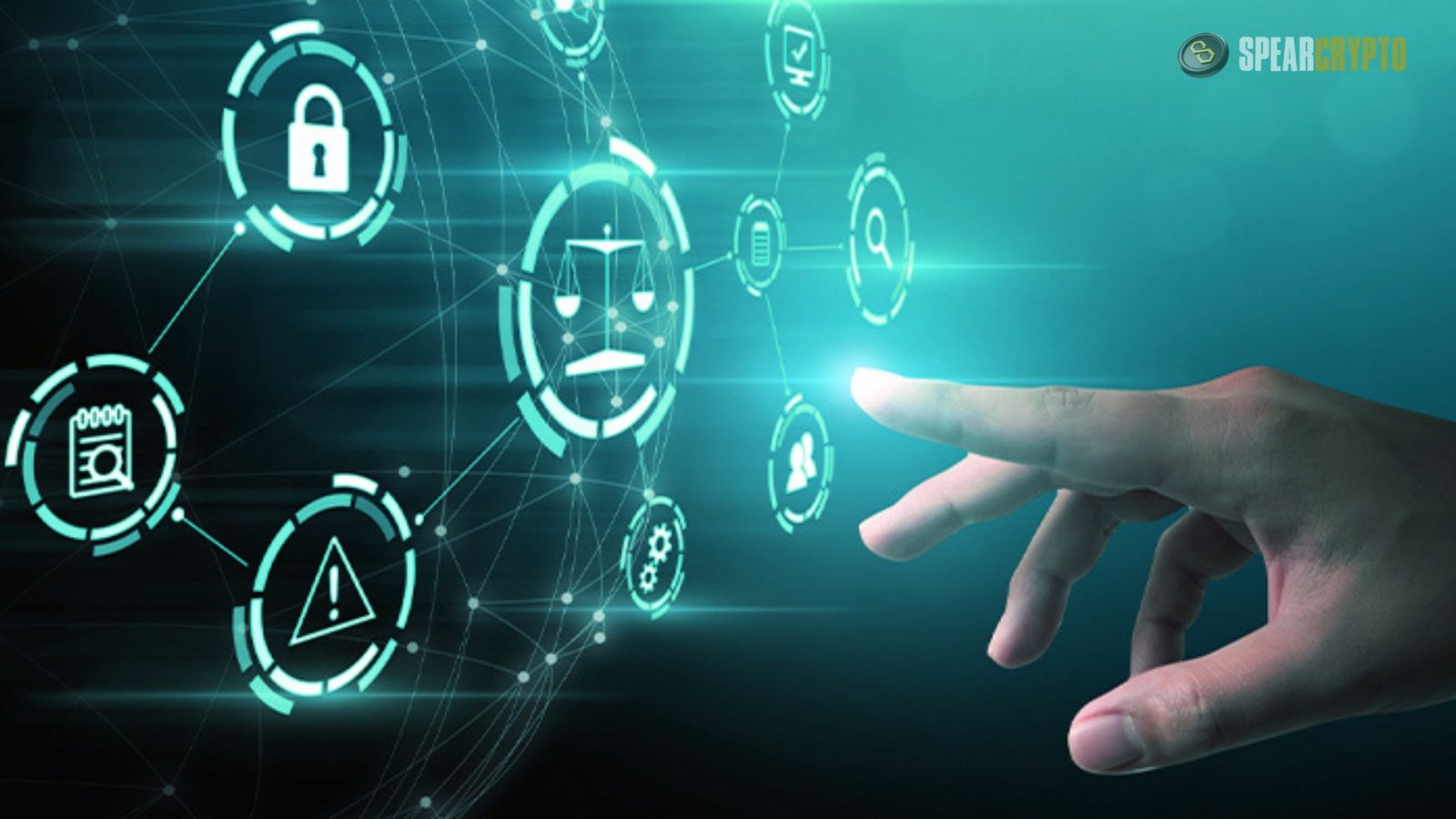
A “smart contract” is an agreement whose terms are encoded in code and may be executed automatically. These contracts eliminate the necessity for intermediaries and execute automatically upon fulfilling established conditions. Smart contracts can potentially automate several tasks within the Internet of Things (IoT) framework, including energy distribution, asset tracking, and supply chain management. To simplify the supply chain process, a smart contract can automate the payment process after a shipment of goods is delivered and confirmed by Internet of Things (IoT) sensors.
Data Monetization and Sharing
The Internet of Things (IoT) data can be useful to many parties. Problems with data ownership and privacy have slowed the sharing and monetization of IoT data. Blockchain technology can make securely sharing and monetizing IoT data possible through a decentralized data marketplace. Customers can trust the data’s authenticity and integrity, and owners can control who can access it.
Use Cases of Blockchain and the Internet of Things Integration
The convergence of Blockchain and IoT can potentially revolutionize various industries by enabling new use cases and business models. Here are some of the most promising applications:
Supply Chain Management
Supply chains are complex networks involving multiple stakeholders, from suppliers and manufacturers to distributors and retailers. These stakeholders’ lack of transparency and trust often leads to inefficiencies, delays, and disputes. Blockchain and IoT can transform supply chain management by providing end-to-end visibility and traceability of goods.
IoT sensors can monitor the condition and location of goods in real time, while Blockchain records all transactions and events on a tamper-proof ledger. This enables stakeholders to track the movement of goods from production to delivery, ensuring that products are authentic, safe, and delivered on time. For example, in the food industry, Blockchain and IoT can help trace the origin of food products, ensuring their quality and safety and reducing the risk of foodborne illnesses.
Smart Cities
The concept of smart cities centers on using technology to optimize resource consumption, increase sustainability, and improve citizens’ quality of life. The Internet of Things (IoT) is vital to smart cities because it controls and monitors multiple urban systems—including energy, public safety, traffic, and waste management—in real time.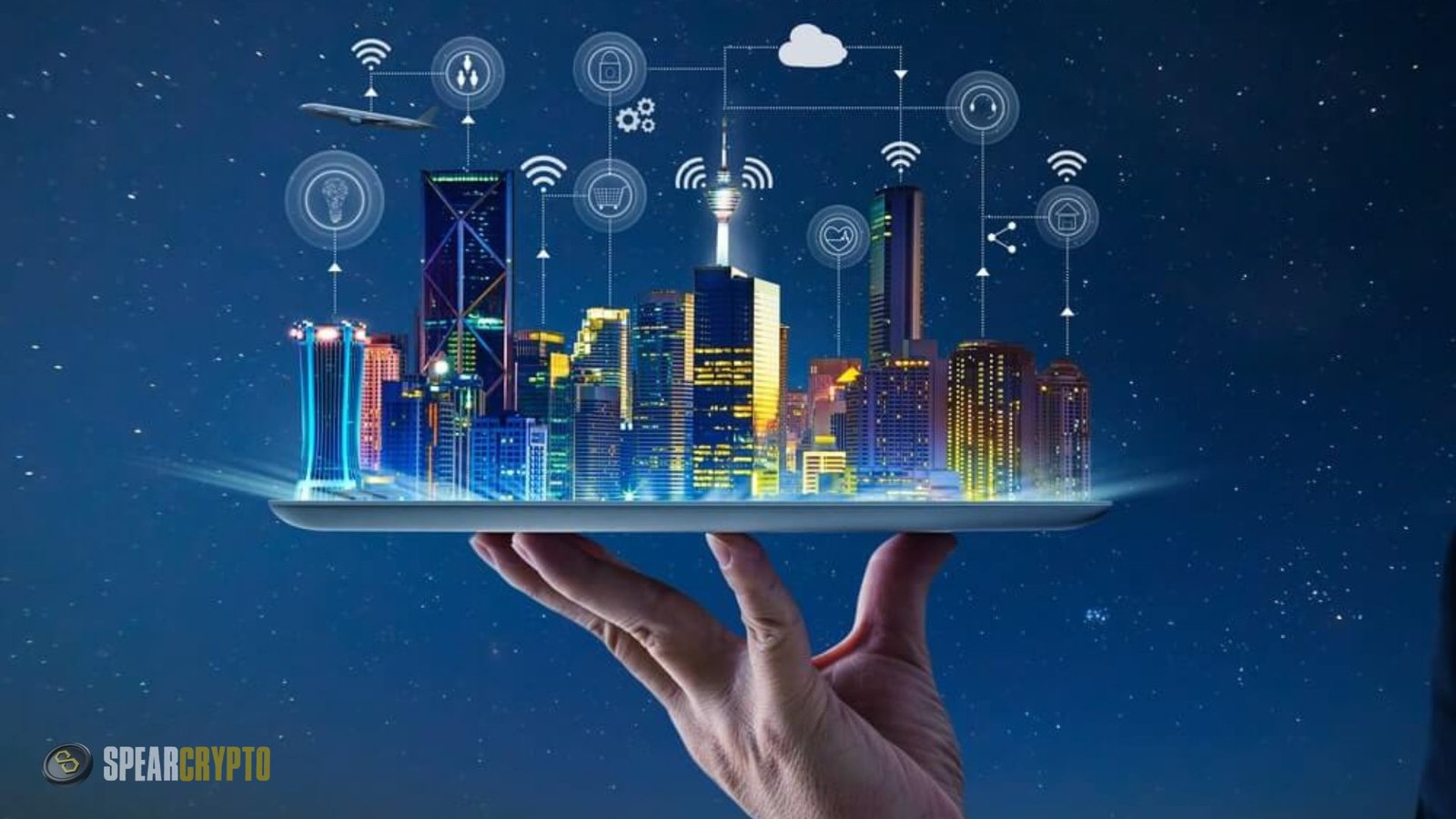
Blockchain technology can improve smart city projects’ efficiency, transparency, and safety by offering a decentralized framework for handling data and Internet of Things (IoT) devices. For example, Blockchain technology can pave the way for decentralized energy trade, where neighbors can buy and sell extra energy from solar panels directly to one another. To top it all off, Blockchain can make voting processes more safe and transparent, which boosts confidence in local governments and encourages more civic engagement.
Healthcare
Records of patients, pictures of their bodies, and details of their treatments are just a few examples of the mountains of personal information created by the healthcare sector. To keep patients’ trust and comply with regulations, it is vital to ensure the privacy and security of this data. Wearable health monitors and other Internet of Things (IoT) devices collect vital signs in real-time, which can enhance medical treatment and patient outcomes.
Blockchain technology can offer a decentralized and secure platform for managing healthcare data, ensuring that only authorized individuals can access patient information. Healthcare practitioners and researchers can access patients’ health records as necessary, but patients can always have complete control over their data. Additionally, Blockchain can facilitate the safe transfer of patient data across various healthcare providers, enhancing care coordination and lessening the likelihood of medical mistakes.
Agriculture
Integrating Blockchain technology with the Internet of Things can also positively impact the agricultural sector. Drones, weather stations, and soil sensors are just a few examples of Internet of Things (IoT) gadgets that can monitor crop health, soil conditions, and weather patterns in real-time. This data makes better farming methods, less resource usage, and more harvests possible.
Blockchain technology can potentially improve the visibility and transparency of food supply chains, leading to more ethical and environmentally friendly production practices. For instance, by scanning a food product’s QR code, a consumer can learn more about its history, manufacturing process, and supply chain. As a result, customers will have more faith in the brand and be able to make educated purchases.
Autonomous Vehicles
Connected devices and artificial intelligence (AI) systems enable AVs to drive themselves and make decisions as they go. A strong system for exchanging information, making decisions, and communicating is necessary for deploying AVs. With blockchain’s decentralized platform, AVs can talk to each other and the infrastructure around them, including traffic signals and road sensors.
Toll payments, parking, and insurance claims are just a few examples of the many operations that may be automated using smart contracts. Blockchain can permit sharing transparent and secure data across AVs to enhance decision-making and decrease accident risk.
Challenges and Considerations
While the convergence of Blockchain and IoT holds great promise, it also presents several challenges that need to be addressed:
Scalability
Blockchain and IoT generate massive amounts of data, and scaling these technologies to handle such volumes is a significant challenge. Traditional Blockchain networks, such as Bitcoin and Ethereum, have limited throughput and can only process a limited number of transactions per second. This can lead to delays and high transaction fees, making it impractical for large-scale IoT applications.
New Blockchain architectures and consensus mechanisms, such as sharding, proof-of-stake (PoS), and directed acyclic graphs (DAGs), are being developed to address this challenge. These innovations aim to improve the scalability and efficiency of Blockchain networks, making them more suitable for IoT use cases.
Interoperability
IoT ecosystems consist of various devices, platforms, and protocols, each with standards and specifications. Ensuring interoperability among these diverse systems is crucial for seamlessly integrating Blockchain and IoT. However, achieving interoperability is challenging due to the lack of standardized protocols and the heterogeneity of IoT devices.
Efforts are being made to develop standardized frameworks and protocols enabling interoperability between IoT and Blockchain platforms. For example, the Interledger Protocol (ILP) facilitates interoperability between different Blockchain networks, allowing them to communicate and exchange data seamlessly.
Security and Privacy
While Blockchain can enhance the security of IoT networks, it is not immune to vulnerabilities. For example, smart contracts can contain bugs or vulnerabilities that malicious actors can exploit. Additionally, blockchain’s transparency can pose privacy risks, as all transactions are visible on the public ledger.
To address these concerns, security best practices and rigorous testing are essential when developing Blockchain-based IoT applications. Privacy-enhancing technologies, such as zero-knowledge proofs and confidential transactions, can also protect sensitive data on the Blockchain.
Energy Consumption
Blockchain networks consume significant energy, particularly those that use proof-of-work (PoW) consensus mechanisms. This can be a concern for IoT applications that require low-power devices and energy-efficient operations. The environmental impact of Blockchain’s energy consumption has also raised concerns, especially in the context of sustainability.
More energy-efficient consensus mechanisms, such as PoS and PoA (proof of authority), are being explored to mitigate this challenge. Additionally, off-chain and side-chain solutions can reduce the amount of data processed on the main Blockchain, reducing energy consumption.
Future Outlook
There is tremendous opportunity for innovation and disruption in the development convergence of Blockchain and the Internet of Things. Both technologies will evolve further, which means that hitherto unfathomable use cases and business models will emerge. Supply chain management, healthcare, smart cities, and autonomous cars benefit greatly from integrating Blockchain’s decentralized and trustless characteristics. The Internet of Things (IoT) connection and data-generation capabilities.
For this promise to be realized, scalability, interoperability, security, privacy, and energy consumption must be overcome. Tackling these difficulties and promoting the adoption of Blockchain and IoT technologies will require close cooperation among industry stakeholders, researchers, and governments.
We should anticipate more funding for R&D and the introduction of new protocols and standards that will make it easier to combine Blockchain with the Internet of Things in the next few years. As these technologies develop further, they will make possible. A more interconnected, secure, and decentralized global ecosystem, which will significantly impact our digital and physical future.
In Summary
The convergence of Blockchain and the Internet of Things represents a significant step forward in the evolution of technology. By combining both technologies’ strengths, we can address some of the most pressing challenges in today’s interconnected world, from data security and privacy to scalability and interoperability. While there are challenges to overcome, the potential benefits of Blockchain and IoT integration are too great to ignore. As we move toward a more decentralized and connected future. The synergy between Blockchain and IoT will undoubtedly play a pivotal role in shaping the next generation of digital innovations.
[sp_easyaccordion id=”3063″]



